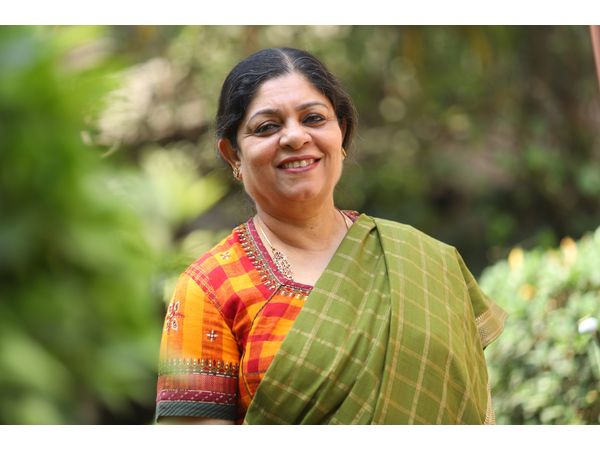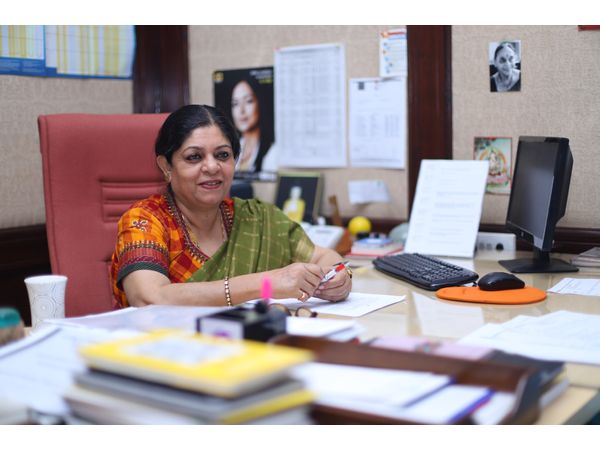Just In
- 4 hrs ago

- 5 hrs ago

- 8 hrs ago

- 15 hrs ago

Don't Miss
- Finance
 FREE, FREE, FREE! 3:1 Bonus: Pharma Stock Hits Back-To-Back Upper Circuits; 500 Shares To Earn Rs 1,69,500
FREE, FREE, FREE! 3:1 Bonus: Pharma Stock Hits Back-To-Back Upper Circuits; 500 Shares To Earn Rs 1,69,500 - Sports
 Manchester City vs Chelsea LIVE Streaming: Where to Watch FA Cup Semi-Final in India, UK, USA and Other Countries
Manchester City vs Chelsea LIVE Streaming: Where to Watch FA Cup Semi-Final in India, UK, USA and Other Countries - Movies
 Pukaar Dil Se Dil Tak Promo: Sayli Salunkhe Impresses In First Video Of Sony TV Show, Details About Her Role
Pukaar Dil Se Dil Tak Promo: Sayli Salunkhe Impresses In First Video Of Sony TV Show, Details About Her Role - News
 Chinese President Xi Jinping Orders Biggest Military Reorganisation Since 2015
Chinese President Xi Jinping Orders Biggest Military Reorganisation Since 2015 - Education
 Exam Pressure Does Not Exist; Studying Punctually is Crucial; Says Aditi, the PSEB 2024 Topper
Exam Pressure Does Not Exist; Studying Punctually is Crucial; Says Aditi, the PSEB 2024 Topper - Automobiles
 Suzuki Swift Hatchback Scores 4 Star Safety Rating At JNCAP – ADAS, New Engine & More
Suzuki Swift Hatchback Scores 4 Star Safety Rating At JNCAP – ADAS, New Engine & More - Technology
 Dell Introduces AI-Powered Laptops and Mobile Workstations for Enterprises in India
Dell Introduces AI-Powered Laptops and Mobile Workstations for Enterprises in India - Travel
 Journey From Delhi To Ooty: Top Transport Options And Attractions
Journey From Delhi To Ooty: Top Transport Options And Attractions
Exclusive: Poonam Muttreja Speaks About India's Family Planning Issues
Boldsky interviewed Ms Poonam Muttreja on the state of family planning in India. Poonam Muttreja is the Executive Director of the Population Foundation of India and has an experience of more than 30 years in the socio-development sector in the country.
Population Foundation Of India
The Population Foundation of India (PFI) is an NGO promoting and advocating for effective formulation as well as implementation of gender-sensitive population, health and development strategies and policies in the country. A unique NGO, PFI works with the Indian government on both national and social levels - and both urban and rural areas, to make changes in the society that would benefit towards causing positive social and behavioural changes [1] [2] .

Family Planning In India
India is ranked the second in countries with the highest population and a growth rate of 36 per cent, the importance of family planning in the country has to be stressed. Rampant growth in the population has always been a topic of concern for the Indian government, which spearheaded the Family Welfare Programme (FWP).

The first country in the world to establish a government family planning program, the Indian government began the program in 1952. One of the major issues impacting the country's economic and social growth, high numbers of population is a topic to be taken seriously[3] .
A Conversation With Ms Poonam Muttreja, Executive Director of the Population Foundation of India
Q. How will the Indian economy be impacted by the rising population in the country?
Ans. More than half (53 per cent) of India's population is in the reproductive age group of 15 to 49 years. Therefore, even though the growth rate of population has declined from 21.5 per cent in 1991-2001 to 17.7 per cent during 2001-2011, the absolute number of people is expected to continue increasing till 2050 even if couples have fewer children. It is important to note that we are close to achieving replacement level fertility, that is every couple having no more than two children. Our large young population, i.e. our demographic dividend, presents the country with an unprecedented opportunity to accelerate economic development and reduce poverty. Investing in this segment of the population is the best way to leverage India's competitive advantage in terms of a large productive workforce and a huge market [4] .
Population Foundation of India's study on 'Cost of Inaction in Family Planning: An Analysis of Health and Economic Implications' provides evidence on the gains India stands to make if its family planning policies are effectively implemented to their full potential. The study states that adequate investments in family planning will reap the following results in the next 15 years for India:
- There could be an additional 13 per cent increase in the per capita GDP of the nation by the year 2031.
- An estimated 1.2 million maternal deaths would be prevented, and 2.9 million infant deaths and 206 million unsafe abortions would be averted.

Q. According to you, where does family planning stand in India as the country turns 73 this Independence Day?
Ans. Well, the Family Planning Programme in India has changed in line with our demographic and social needs. Recognizing the changing priorities of the population, in 2017, the Ministry of Health and Family Welfare has made sustained efforts to reach the last mile through initiatives such as Mission Parivar Vikas to focus attention on 145 high fertility districts and introduction of new contraceptives[5] .
However, the government has to do much more in the scene because only less than half of the female population use contraceptive measures and an estimated 40 million do not have access to contraceptives.

Also, the current budgetary allocations for family planning activities do not align with our demographic needs and, there is a limitation in the allocation for the training of the health workforce and communication strategies to generate demand for family planning services.
Q. How do you think population is linked to women's health in the country?
Ans. Early childbearing and teenage pregnancies have a lasting impact on the inter-generational vulnerability whereby undernourished girls grow to become undernourished women who in turn give birth to a new generation of undernourished children.
Early marriage, in general, is characterised by immediate childbearing. India is among countries with the highest number of girls married before the age of 18, which in turn poses risk to women's health. People tend to conveniently forget the aspect that women's ability to exercise their reproductive choice and access to quality reproductive health services including family planning is extremely important for individual and societal well-being and the nation's development as a whole.
Q. What measures can be taken in a country of such diverse cultural beliefs?
Ans. Social pressure to prove fertility, insufficient knowledge of contraceptives and limited decision-making power among women are the main reasons for the high levels of early pregnancy in India. Though the proportion of women married before the age of 18 has declined between 2005-06 and 2015-16, one cannot ignore the fact that over one out of four girls were married before the age of 18.
One must focus on the importance of focusing on social factors that determine the status of women and decisions regarding family planning. As women's reproductive health is largely affected by decisions mostly by their families, men must be actively engaged in different roles not merely being sexual partners, husbands, head of families, but as agents who can change the family planning narrative in the country and the lives of women. There needs to be an increased focus on social and behaviour change strategies to address these regressive social norms.
Q. How effective is family planning in rural India?
Ans. 66 per cent of India's reproductive age population resides in rural areas [6] . The unmet need for family planning is comparatively higher in rural areas (13.2 per cent) than in urban areas (12.1 per cent). The current efforts in family planning need to be strengthened to reach the rural population.
Through Mission Parivar Vikas the government has already introduced awareness campaigns. A family planning kit, the Nayi Pehal is distributed by ASHAs to identified newly married couples in rural areas. Apart from these, injectable contraceptives are being made available at all levels of public health facilities. Also, free condom supplies are being provided through Condom Boxes placed at strategic locations like public health facilities and Gram Panchayats for easy access.
Consequently, these approaches to family planning through new promotional schemes specific to rural areas is expected to expand the reach of family planning services effectively in rural India.
-----
Ms Poonam Muttreja concluded the conversation by focusing on the importance of men in the country sharing the responsibility of family planning because male engagement in family planning in India is negligible. And the prominent lack of training and knowledge in the healthcare workforce, especially in the rural parts of India must be improved.

- [1] Pandey, K. (2019 July 19). Concern for the increasing population in India just a political rhetoric. Retrieved from https://www.downtoearth.org.in/blog/governance/concern-for-increasing-population-in-india-just-a-political-rhetoric-65729
- [2] Deccan Chronicle. (2019 July 16). Population Regulation Bill, 2019: Misreading of India’s demographic trajectory. Retrieved from https://www.asianage.com/life/more-features/160719/population-regulation-bill-2019-misreading-of-indias-demographic-trajectory.html
- [3] Chandrasekhar, S. (2011).Infant mortality, population growth and family planning in India(Vol. 19). Routledge.
- [4] Reed, E., Donta, B., Dasgupta, A., Ghule, M., Battala, M., Nair, S., ... & Raj, A. (2016). Access to money and relation to women’s use of family planning methods among young married women in rural India. Maternal and child health journal, 20(6), 1203-1210.
- [5] Jahan, U., Verma, K., Gupta, S., Gupta, R., Mahour, S., Kirti, N., & Verma, P. (2017). Awareness, attitude and practice of family planning methods in a tertiary care hospital, Uttar Pradesh, India. Int J Reprod contraception Obstet Gynecol, 6, 500-6.
- [6] McClendon, K. A., McDougal, L., Ayyaluru, S., Belayneh, Y., Sinha, A., Silverman, J. G., & Raj, A. (2018). Intersections of girl child marriage and family planning beliefs and use: qualitative findings from Ethiopia and India. Culture, health & sexuality, 20(7), 799-814.
-
 newsGoogle Marks India’s 73rd Independence Day With A Beautiful Doodle
newsGoogle Marks India’s 73rd Independence Day With A Beautiful Doodle -
 fruity bakesIndepedence Day 2019: How About Making The Perfect Tricolour Parfait?
fruity bakesIndepedence Day 2019: How About Making The Perfect Tricolour Parfait? -
 fashionIndependence Day 2023:Prime Minister Modi's Vibrant Rajasthani Turban
fashionIndependence Day 2023:Prime Minister Modi's Vibrant Rajasthani Turban -
 insyncIndependence Day 2023: Wishes, Greetings, Quotes, Images, Wallpaper, FB And WhatsApp Status
insyncIndependence Day 2023: Wishes, Greetings, Quotes, Images, Wallpaper, FB And WhatsApp Status -
 insyncIndependence Day 2023: Is It 76th Or 77th Independence Day? Know History, Theme And Significance
insyncIndependence Day 2023: Is It 76th Or 77th Independence Day? Know History, Theme And Significance -
 pulseIndependence Day Special: 7 Things The West Gets Wrong About India
pulseIndependence Day Special: 7 Things The West Gets Wrong About India -
 recipesDon’t Break Your Fitness Regimen This Independence Day: Try This Healthy Tricolour Sandwich
recipesDon’t Break Your Fitness Regimen This Independence Day: Try This Healthy Tricolour Sandwich -
 pulseIndependence Day 2022: How To Store And Fold The National Flag Of India
pulseIndependence Day 2022: How To Store And Fold The National Flag Of India -
 insyncHar Ghar Tiranga Campaign: Steps To Pin A Flag And Download The Certificate
insyncHar Ghar Tiranga Campaign: Steps To Pin A Flag And Download The Certificate -
 pulseIndependence Day 2022: Date, History, Significance, And Celebrations
pulseIndependence Day 2022: Date, History, Significance, And Celebrations -
 pulseHappy Independence Day 2022 Messages, Quotes, Wishes And WhatsApp Status To Share
pulseHappy Independence Day 2022 Messages, Quotes, Wishes And WhatsApp Status To Share -
 insyncIndependence Day 2023: National Song Of India 'Vande Mataram' Song Lyrics And Meaning In English
insyncIndependence Day 2023: National Song Of India 'Vande Mataram' Song Lyrics And Meaning In English


 Click it and Unblock the Notifications
Click it and Unblock the Notifications



